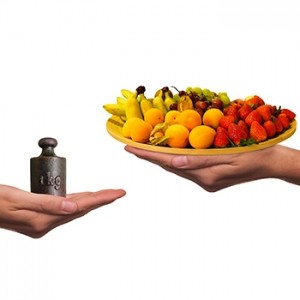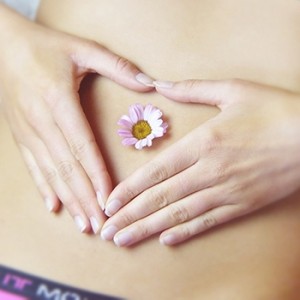Nutrition blog
Recipes – interesting facts – tips – inspiration, whether:
Diet, vegan, vegetarian, paleo or just health-conscious…
Recipes – interesting facts – tips – inspiration, whether:
Diet, vegan, vegetarian, paleo or just health-conscious…
This year’s Lent in the Christian faith takes place from March 6 to April 20. A reason for many people to get to grips with the subject of fasting.

According to the original Christian definition of Lent, the diet during the days from Ash Wednesday to Easter Sunday should be as simple as possible, with no meat or alcohol.
Nowadays, Lent is often used as a time for diets and fasting cures. The aim is to eat more healthily and avoid sweets, particularly fatty foods and alcohol, for example. The goal of weight loss, a more beautiful complexion and the desire to feel good in your skin again are often at the forefront.
But is that really the point of Lent?
To describe it in Luther’s words, fasting is rather “a fine external discipline”. What you ultimately give up during Lent is therefore up to you.
If you decide to fast from food, I would like to give you a few suggestions for Lent:
In actual water fasting, only pure water is consumed for five days after a corresponding preparation phase. You can also do water fasting differently. Try to avoid alcohol, soft drinks such as cola, lemonade or fruit juices during the fasting period and only drink pure water. You will be amazed at how much your body will change for the better in 40 days just by drinking pure water.
Who doesn’t know them – the cabbage soup diat? For many years, there have been well-known recipes that are suitable for soup fasting. Only freshly cooked soup is eaten during Lent. This helps the body to detoxify and with a little exercise, such as yoga, the fat deposits melt away.
But beware: Soup fasting with ready-made soups or packet soups will not achieve the success you had hoped for.
Pre-cook soups and freeze them in large containers. So you can enjoy a new soup every day. This saves resources, time and money.
If you find it difficult to give up one or two “little sins” in your diet, intermittent fasting could be the solution. With so-called
intermittent fasting
it is not usually the diet itself that is changed, but the respective meal times. You can determine the fasting rhythm yourself. One option would be to include a fasting day and eat normally for the remaining six days of the week. Another option would be to eat normally for six hours and go without food for 18 hours.
Another fasting option would be a vegetarian or vegan diet. It’s up to you whether you only eat meat or no animal products at all. Why not use Lent to get to grips with a plant-based diet? Just taking the time to test alternatives to animal products should be considered a successful fast.
With a vegetarian or vegan diet, it is important to ensure sufficient variety to prevent deficiency symptoms.
I would be happy to accompany you on this path to a vegetarian or vegan diet.
 Fasting alternatives
Fasting alternativesIn these fast-moving times, where we are often expected to be permanently available at work, the sense of a fasting period – a time of regeneration – is completely lost.
Treat yourself to this time of regeneration and try out a “digital fast”, for example. You decide what digital fasting could look like. Perhaps you are making a conscious decision to spend less time on your cell phone or tablet? Or are you reducing the time you spend on Facebook, Instagram and other social media channels? Just give it a try and take the time to read a good book or do some regenerative relaxation meditation instead.
Other alternative fasting options would be a so-called “consumption fast”.
Perhaps you have already caught yourself buying products without really needing them? Be it clothes, shoes, bags, decorative items, etc. During Lent, make sure you only buy what you actually need. This form of fasting will also make your bank account happy.
And while we’re on the subject of consumer fasting, why not combine it with not buying plastic items or consciously reducing waste? Avoiding plastic items is relatively easy these days thanks to the many plastic-free alternatives in everyday life. If you need some advice on this, you can find it here on my blog:
Living and eating plastic-free – is it possible?
for useful tips.
With this fast, you not only make a positive contribution to our environment, but you will soon feel that it is also good for the soul.
For anyone who could do without a car for their daily commute to work, Lent would be the perfect time for a “CO2 fast”.
Instead of taking the car to work, driving the children to school or going shopping, you could switch to the bike. If possible, do various errands on foot or use public transport. So you kill two birds with one stone: you reduce unnecessary CO2 emissions and help in the fight against climate change, while at the same time getting some exercise in the fresh air. This makes your body happy, which is grateful for every minute of daylight after the winter months. And the scales will also confirm that regular exercise will help you to quickly lose a few kilos on your hips.
How intensely or religiously you experience Lent is ultimately entirely up to you. But to actively revive the general basic idea of a mindful way of life, which includes giving and taking, in our rather selfish consumer society, is not only good for your body and soul, but also for the general public.
So take your time – time for a healthy diet, time to listen to yourself and time for a positive change in your life.
With this in mind, I wish you a regenerative Lent and look forward to hearing from you if I can advise you on your own personal Lent.
Your nutritionist in Munich – Silke Schweitzer
If you choose me as your nutritionist, you will receive individual advice and support tailored to you and your goals, wishes and needs.
I will meet you where you currently are and guide you towards your new, healthier, happier lifestyle.
Silke Schweitzer – Ernährungsberaterin
+34-657-477 633
+49-170-4857458
info@e-schweitzer.de
Marbella
29010 Málaga

 Healthy through the Corona period
Healthy through the Corona period